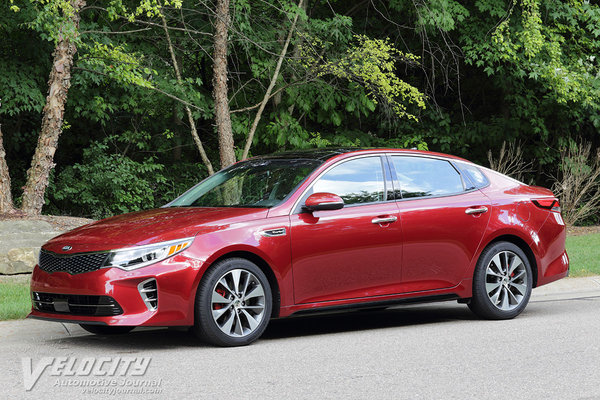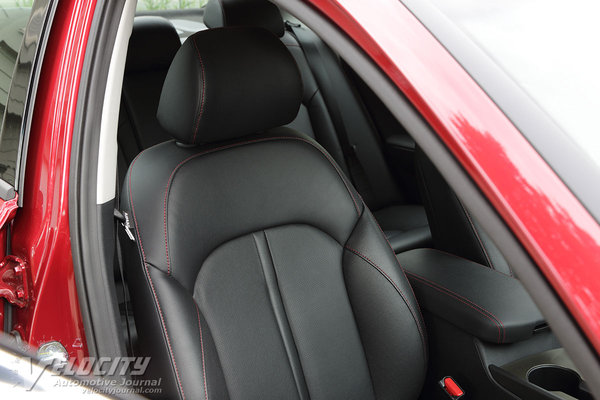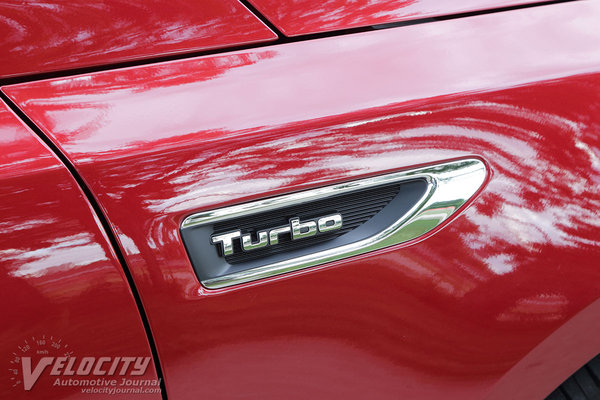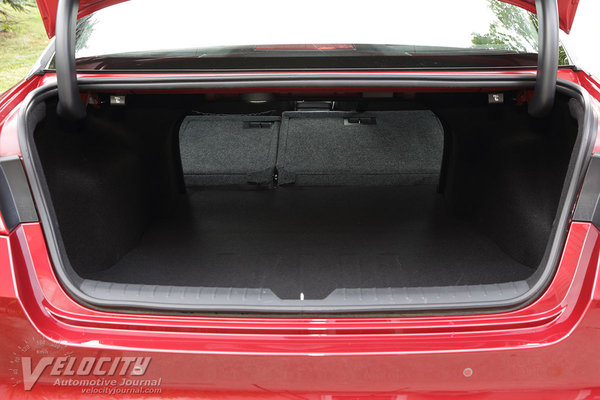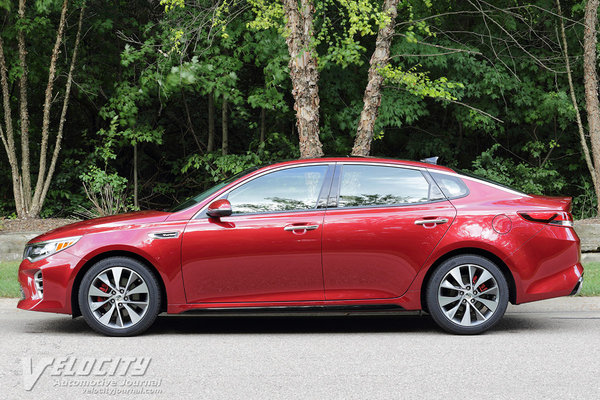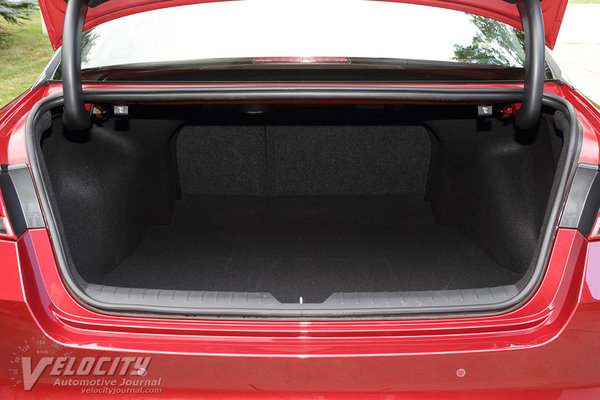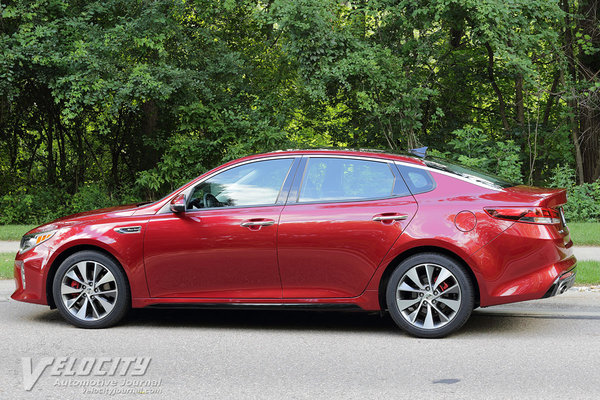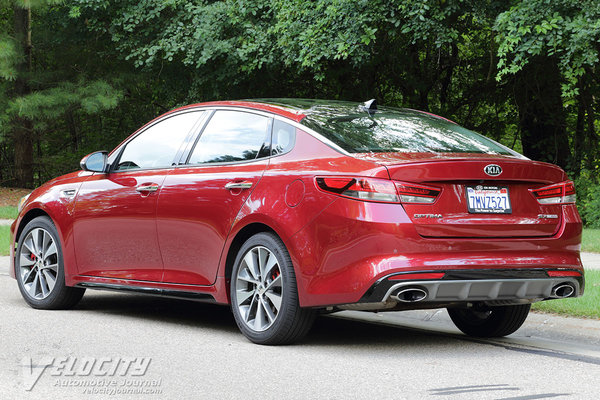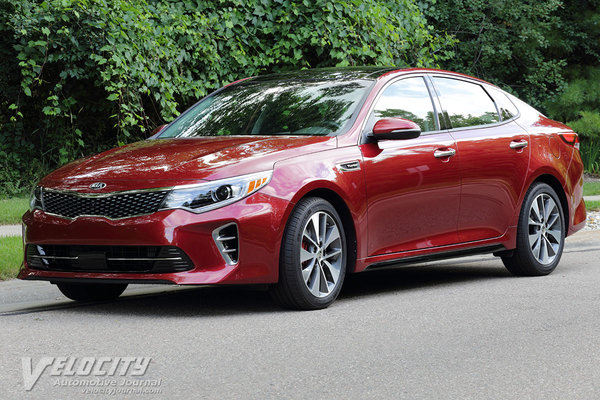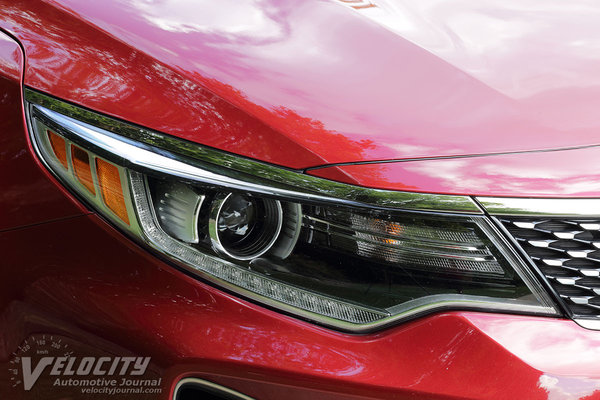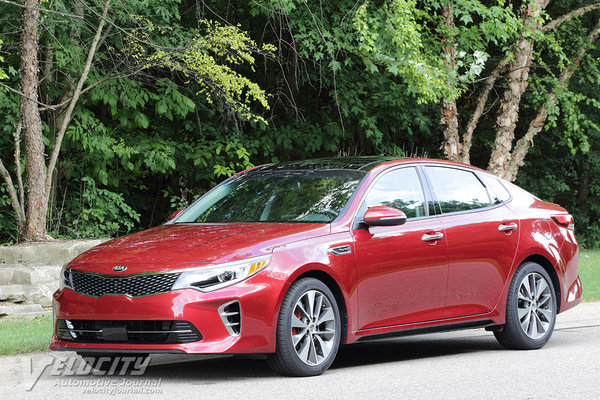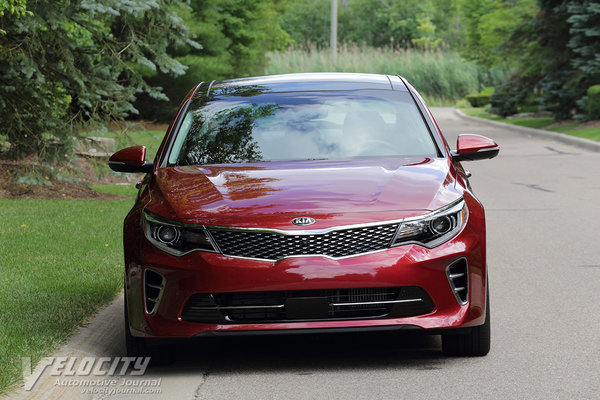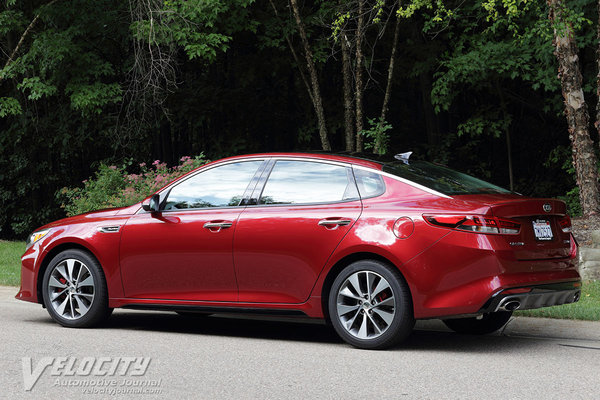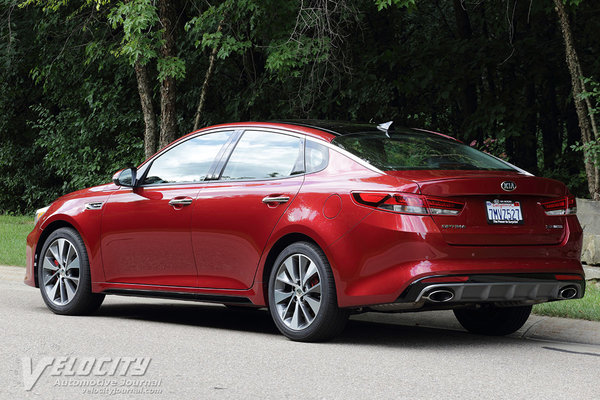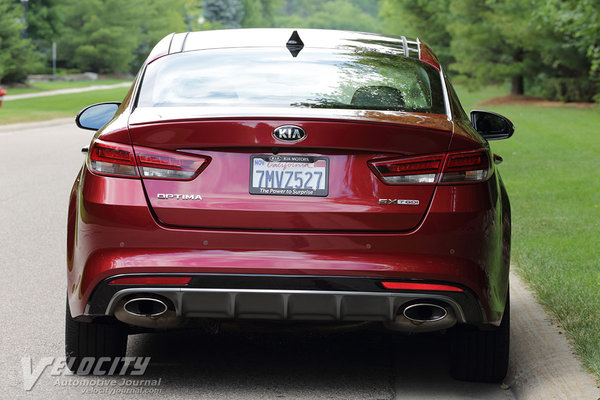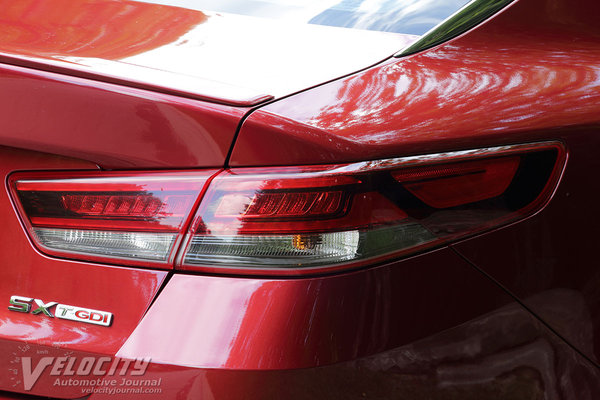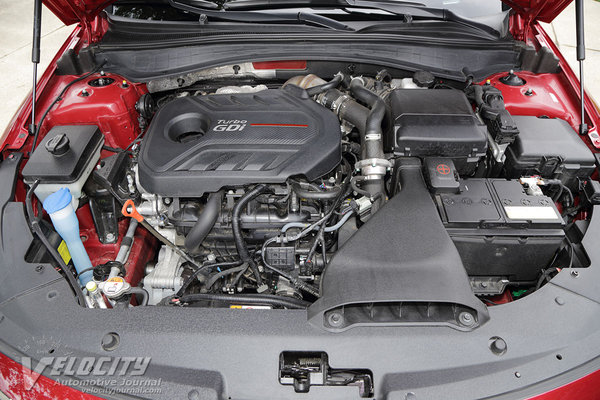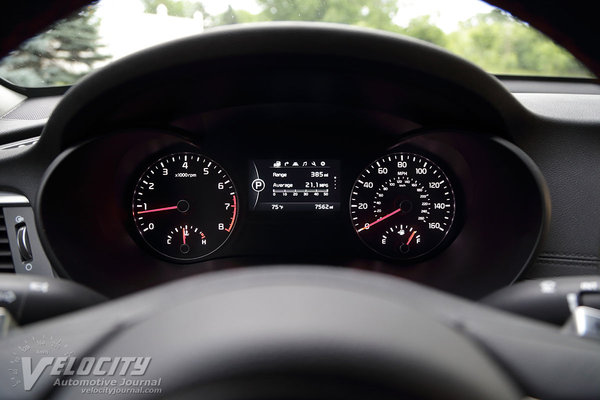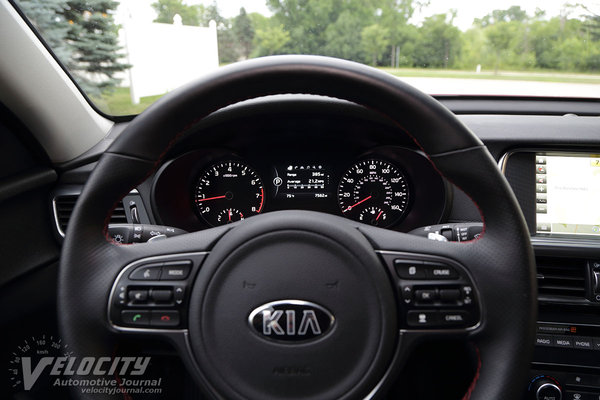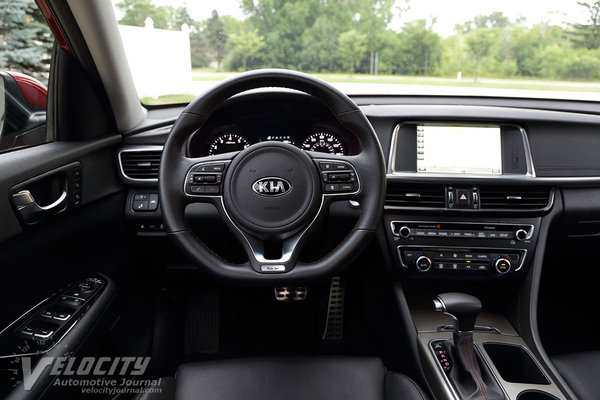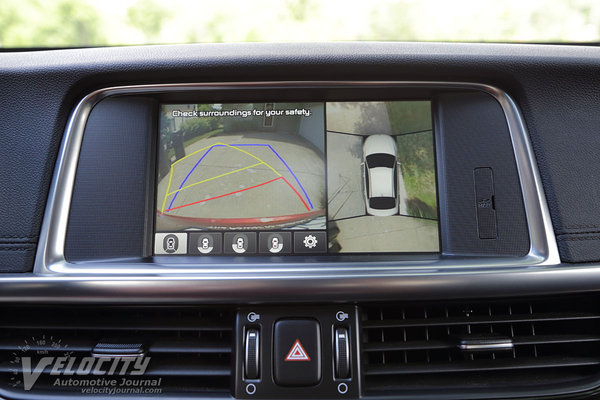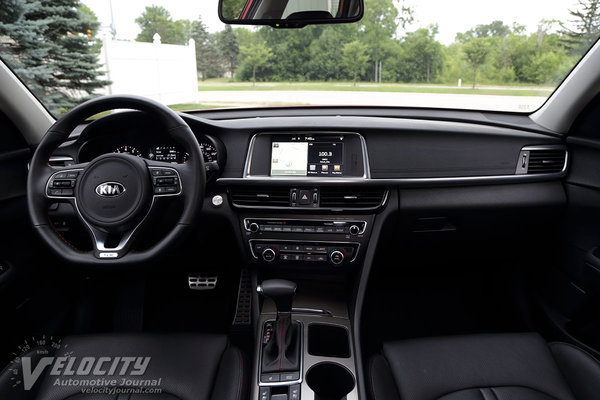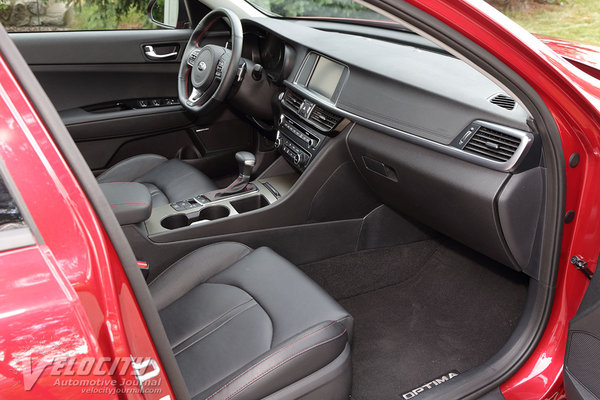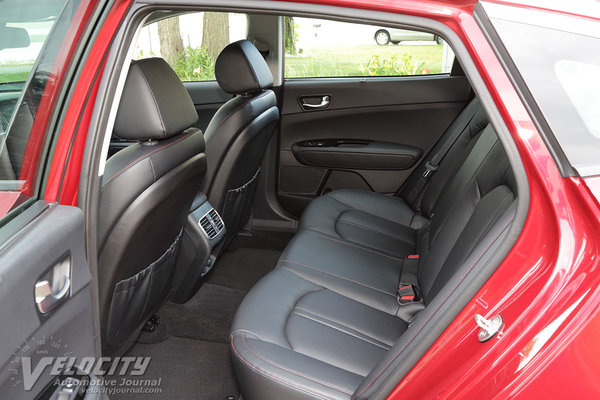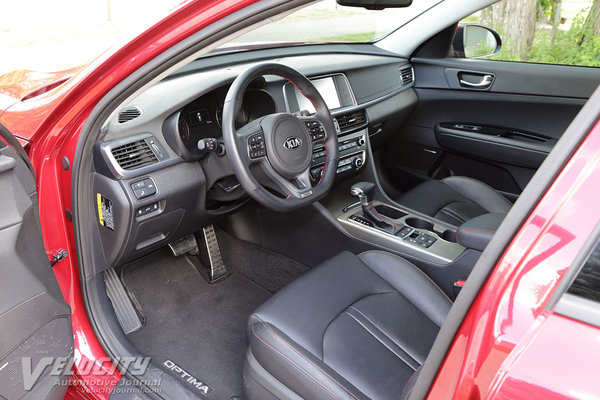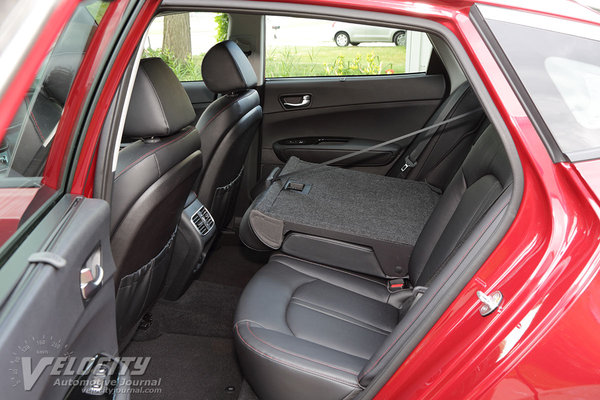2016 Kia Optima SX Turbo
08/23/2016
Shahed Hussain
The Optima has evolved from a generic midsize sedan into a contender among the top rank in this hyper-competitive segment. Kia's strategy has been to offer more standard content and distinctive styling than its Japanese and American rivals.
The Optima is available in five trim levels, starting with the Optima LX ($22,140), LX 1.6T ($24,140), EX ($25,140), SX ($29,940), and SX Limited ($36,040). We tested a fully equipped 2016 Optima SX Turbo, now sold as the SX Limited. Notable standard equipment includes a panoramic sunroof, leather seats (heated/ventilated front, heated rear), heated steering wheel, navigation system, surroundview monitor, and Harman/Kardon audio system. Active safety technologies such as front collision warning system, blind spot detection system, rear cross traffic alert, and advance smart cruise control are all included in the $4,800 SXT Premium Technology Package (standard content on the SX Limited). A rarity among its competitors, the Optima has power-retracting exterior mirrors that extend when the driver approaches the vehicle.
Kia powers the Optima with three inline fours: a 2.4L, a 1.6L turbo, and a 2.0L turbo. Only the Optima SX is equipped with 2.0L turbo, rated for 245-bhp @ 6,000 RPM and 260 lb.-ft. @ 1,350-4,000 RPM. The all-aluminum dual overhead-cam four is direct-injected and runs on 87-octane unleaded. Coupled to the turbo four is a 6-speed automatic. The EPA fuel consumption ratings are 22/32 MPG (city/hwy.). We averaged 24 MPG in mixed street and highway driving. Drivers with a lighter throttle foot will likely achieve higher fuel economy.
As with most other front-drive sedans, the Optima uses MacPherson struts in front with coil springs and a stabilizer bar. At the rear is a multi-link layout with coil springs, dampers and stabilizer bar. The electrically-assisted rack-and-pinion steering has 2.6 turns lock-to-lock. Brakes are all disc with vented front rotors. The SX gets larger diameter front rotors than other Optimas. V-rated Michelin Primacy all-season tires (235/45R18) are mounted on 18-inch diameter alloy wheels. Curb weight is 3,594 lbs. with the optional panoramic sunroof, or just 3,494 lbs. without it. Base Optima models weigh in as low as 3,219 lbs.
The Optima's interior color scheme is primarily dark gray hues with aluminum accents. Integrated within the leather-wrapped steering wheel are audio and mobile phone controls. Paddle shifters enable manual shifts on demand. The crisply illuminated gauges are accompanied by a trip computer display within the instrument binnacle. Dual 12V power outlets, USB and line-in audio inputs are hidden beneath a sliding panel in the center console. Stainless steel brake and accelerator pedals affirm the Optima's sport sedan aspirations.
Perforated Nappa leather seats provide a balance of comfort and lateral support. A 12-way power adjustable driver's seat is accompanied by 10-way power adjustments for the front passenger. We appreciated the ventilated front seats during the heat of summer. Rear seat accommodations are suitable for passengers up to 6 ft. tall with ample headroom and legroom. The rear seat cushion lack thigh support for adults, but this is a minor complaint. Back seat passengers will appreciate the 12V and USB charge ports on the center console.
As with most small-displacement turbos, the 2.0L doesn't have much torque below 2,000 RPM, and flooring the accelerator pedal yields nothing before the turbo spins up to boost available power. Manually downshifting a couple of gears is a superior strategy until the turbo comes up to speed. A full throttle launch squeals the tires, but torque steer is nearly absent. On the highway, boost is readily available, so midrange throttle response is pleasingly immediate. Throttle response can be adjusted via Power, Normal and Eco modes available via a Drive Mode button on the center console. We preferred the Power or Normal mode for most driving situations. The Eco mode damps the throttle too much to be usable in city traffic. Paddles behind the steering wheel give the driver the quick shifts on demand. We did note that under light throttle, the 6-speed automatic occasionally suffers from abrupt shifts.
Kia tuned the Optima's suspension with firm damping, but the chassis allows moderate body roll. Instead of dulling understeer, the Optima tracks cleanly around curves. Patched pavement can upset the chassis, especially the frost heaves common on Detroit highways. However, we found this to be minor annoyance. A firm brake pedal inspires confidence and the Optima's disc brakes provide quick stops. The electrically-assisted steering is highly boosted at low speeds, but reduced assist at highway speeds ensures accurate tracking and stability. Road textures are accurately transmitted via the steering system. The Michelins are quiet as expected, and wind noise is appropriately subdued.
Among the many midsize sedans in the market, the Optima stands out for its distinctive styling and extensive standard and available equipment. As an added bonus, Kia has tuned the Optima as a genuinely sporty sedan without neglecting the practical attributes essential for a family hauler. Opting for an American or Japanese midsize sedan is an easy choice, but customers looking for something different should consider the Optima.

